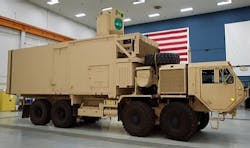Regional passenger jet fleets worldwide to double over the next two decades, jet maker Embraer says
Demand over the next two decades for regional passenger jets of all classes should be for 2,350 in North America; 1,675 in Europe; 975 in China; 670 in Latin America; 615 in Asia Pacific; 435 in Russia and the Commonwealth of Independent States; 310 in the Middle east; and 195 in Africa, Embraer analysts say.
The fastest growing market for 30-to-120-seat passenger jets over the next two decades will be China, followed by Latin America, the Middle East, Asia Pacific, the Commonwealth of Independent States, and Africa, Embraer analysts say. North America and Europe will see relative low demand because their passenger jet fleets are mature and the economic recover in these regions will be slower than others, analysts say.
Demand over the next 20 years should be for 430 30-to-60-seat passenger jets; 2,670 61-to-90-seat passenger jets; and 4,125 91-to-120-seat passenger jets, Embraer analysts say. For more information contact Embraer online at www.embraer.com.
